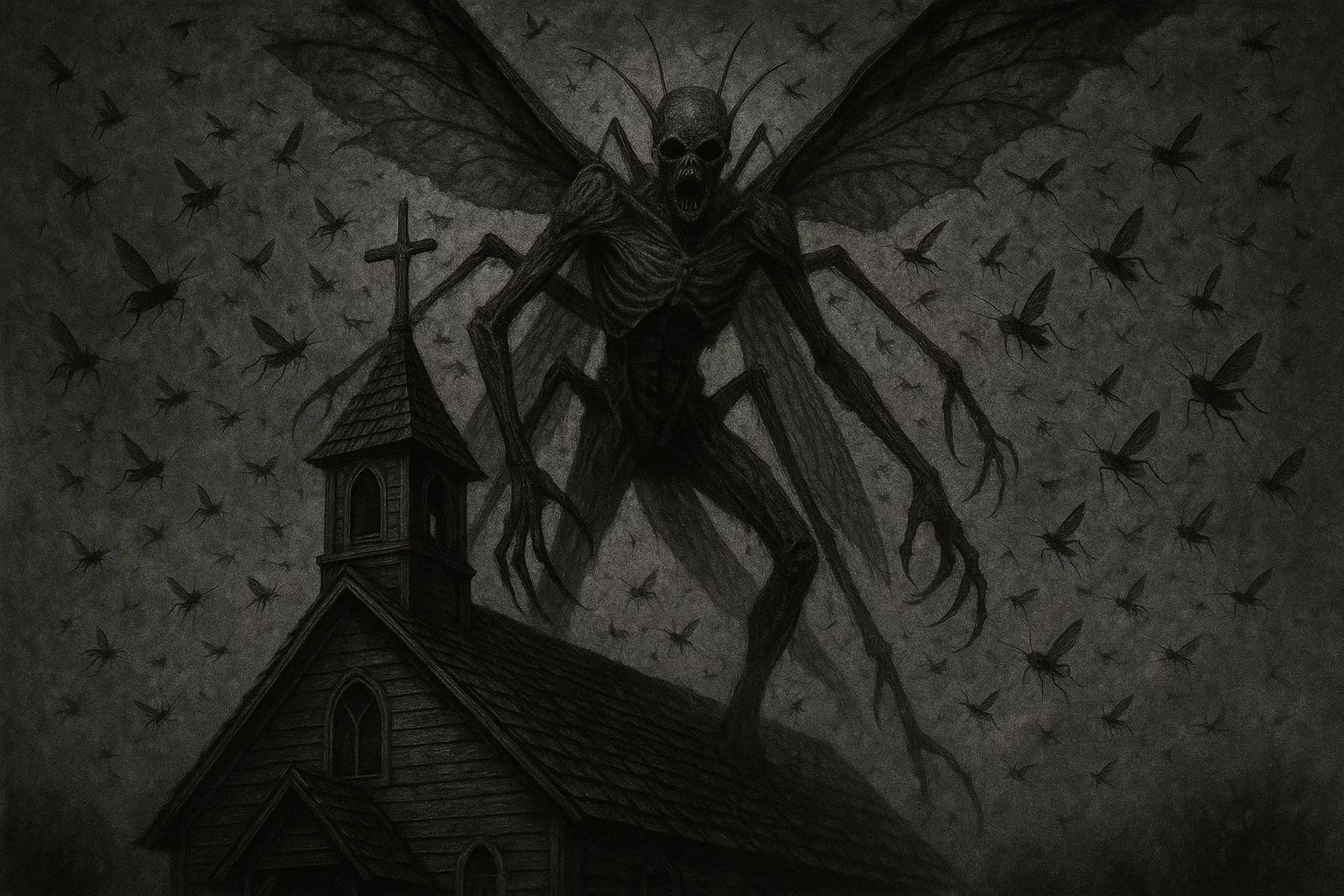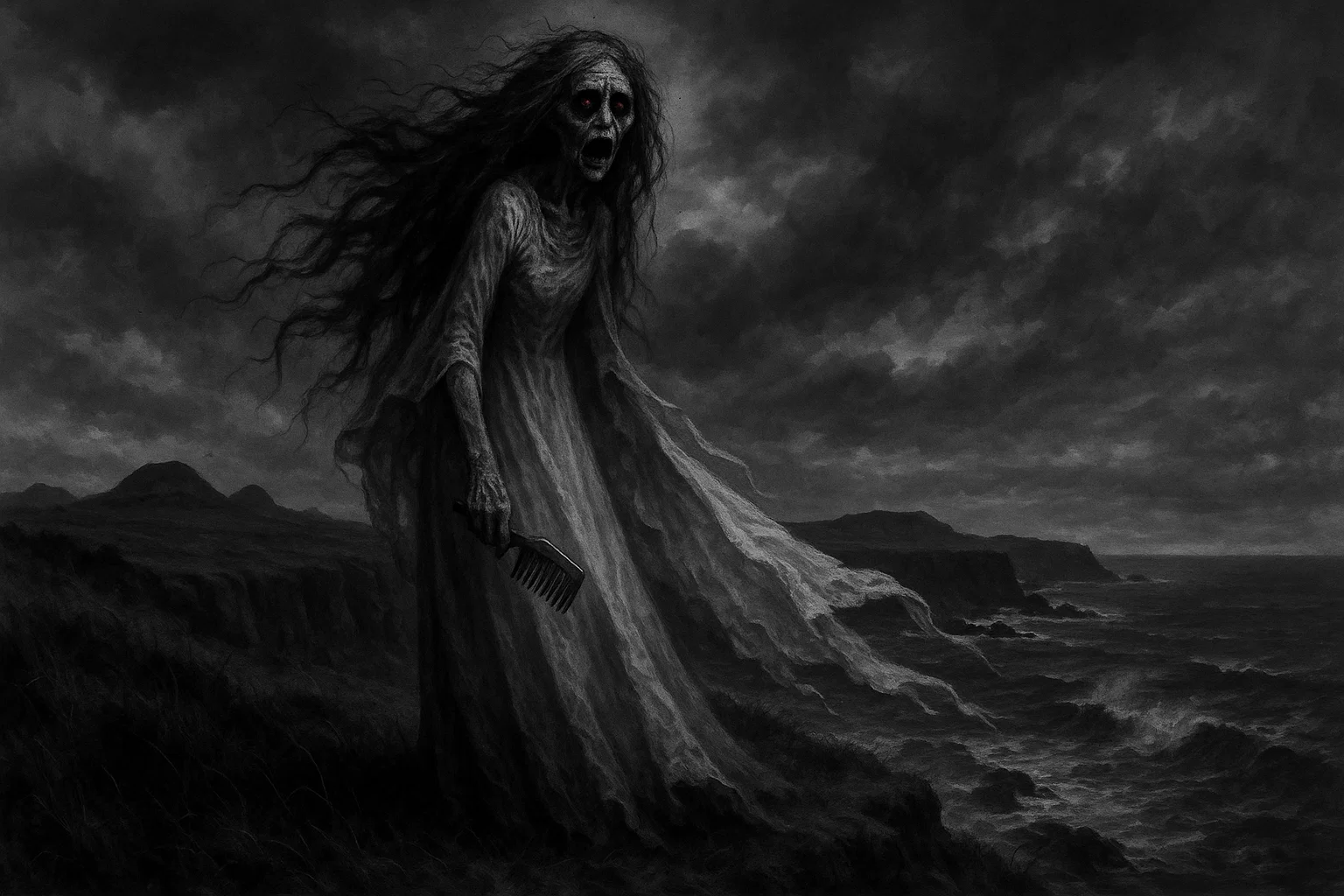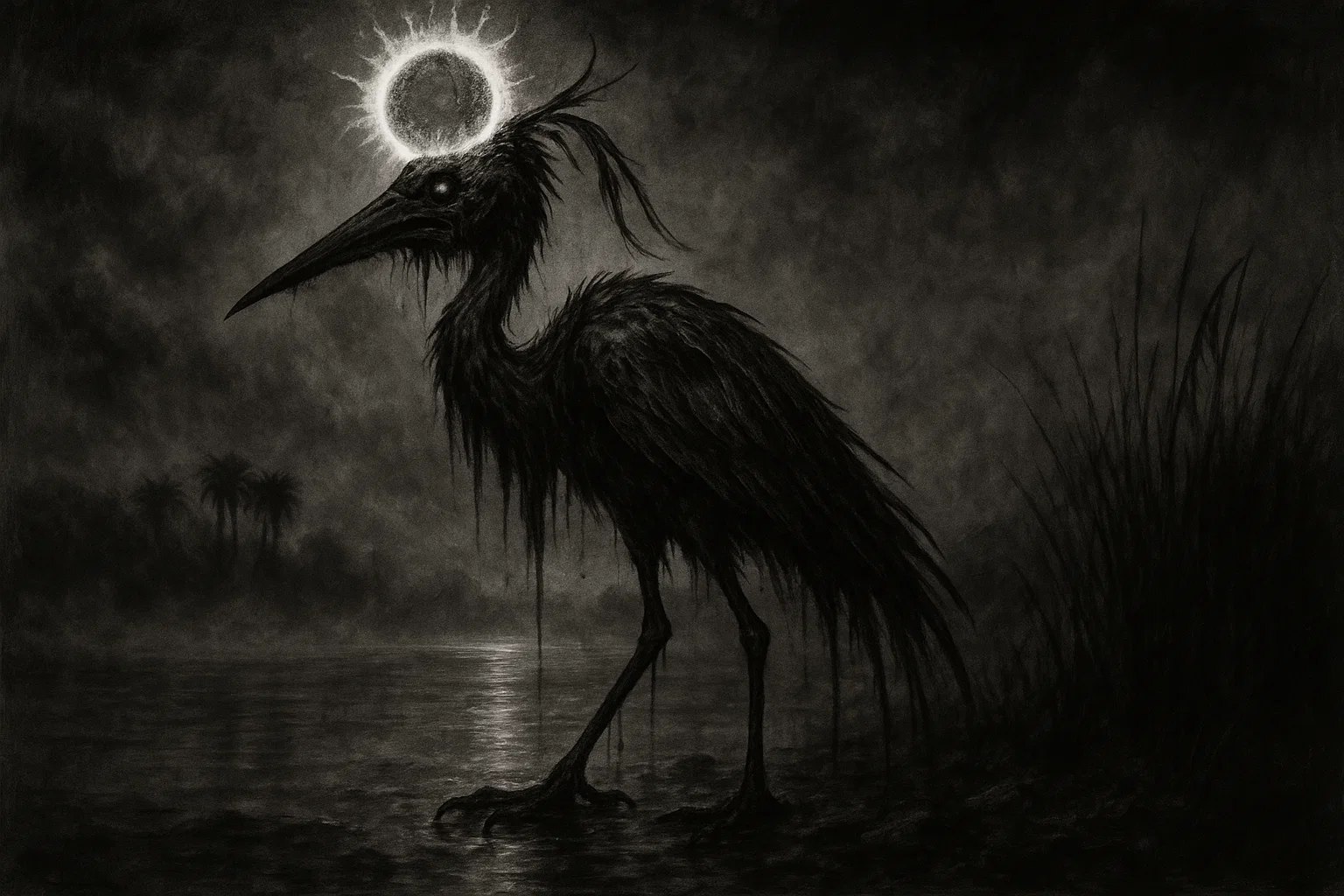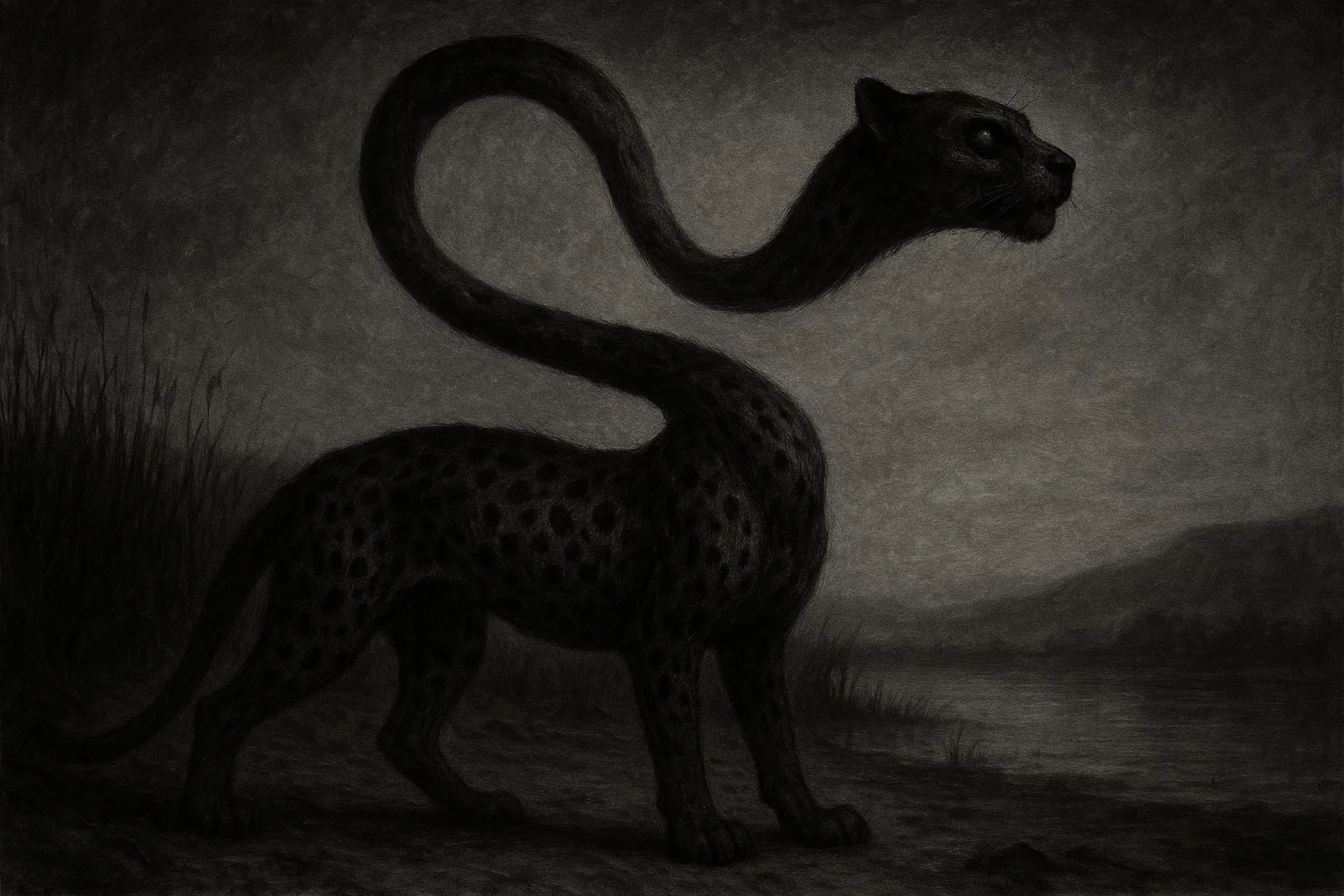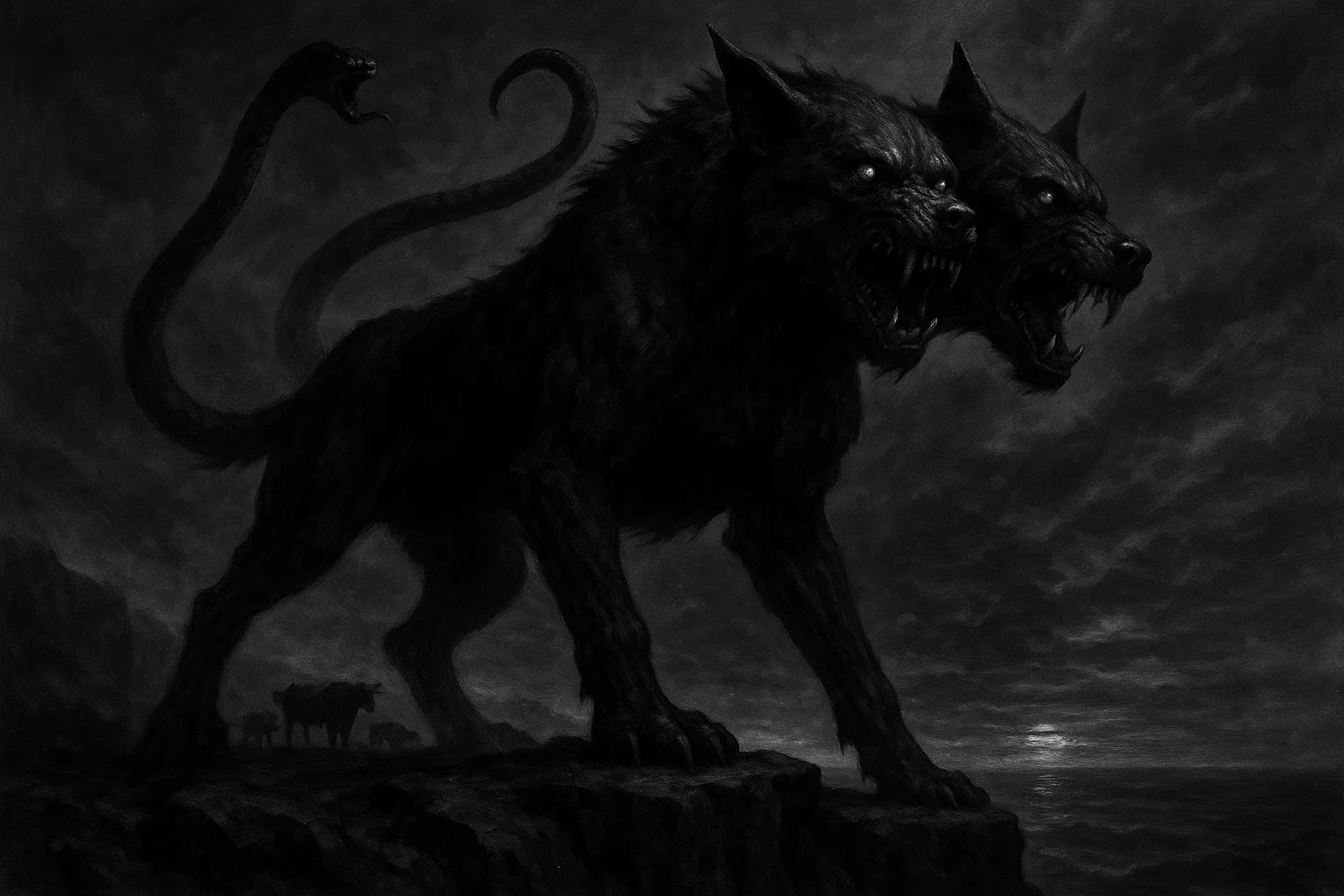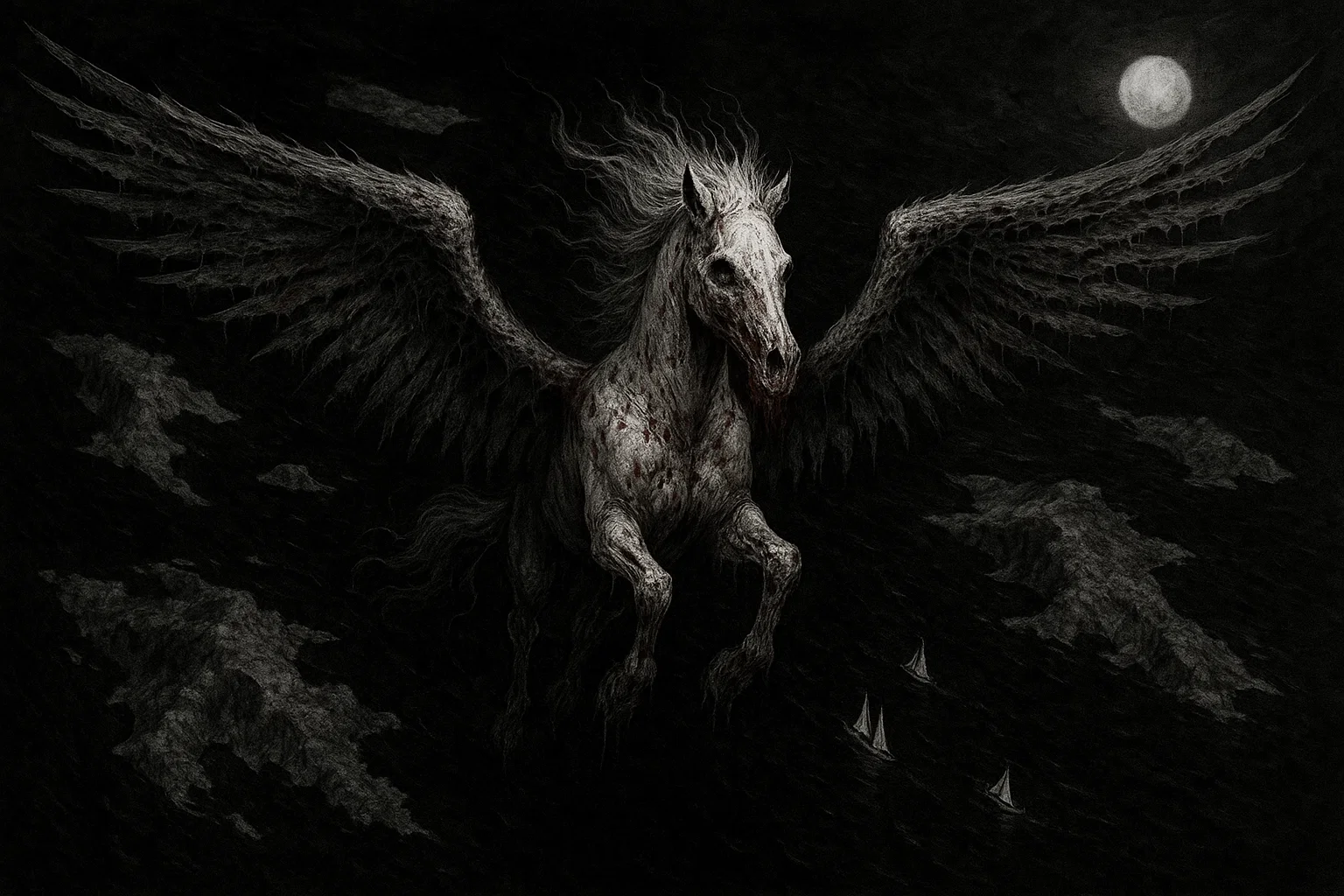Abaddon, the Angel of the Abyss, is a figure shrouded in mystery and dread within Judeo-Christian lore. Known as Apollyon, or “The Destroyer,” he first appears in the Hebrew Bible as a place of ruin, synonymous with death and chaos.
In the Book of Revelation, Abaddon transforms into a powerful entity, commanding a swarm of demonic locusts that torment humanity during the end times. Is he a malevolent demon serving Satan, or an angel executing God’s divine judgment?
Summary
Key Information
The following table summarizes essential details about Abaddon:
| Category | Details |
|---|---|
| Name | Abaddon (Hebrew), Apollyon (Greek), Exterminans (Latin), Muriel (apocryphal) |
| Title | Angel of the Abyss, King of the Locusts, The Destroyer |
| Gender | Male (typically depicted) |
| Role | Ruler of the Abyss, brings destruction and torment in apocalyptic events |
| Hierarchy | High-ranking demon (under Satan in some views) or angel serving God |
| Servitors | Commands an army of demonic locusts |
| Superior Demon | Satan (in demonic interpretations) or God (in divine interpretations) |
| Powers | Destruction, torment, locust command, possible weather control, soul manipulation |
| Appearance | Not described in traditional texts; modern depictions show a humanoid with locust-like features, wings, and a terrifying presence |
| Etymology | Hebrew ’Ăḇaddōn meaning “destruction” or “doom” |
| Associated Figures | Linked to end-times prophecy, Moses (apocryphal), Adam (apocryphal) |
| Weaknesses | Subject to divine authority; lacks finesse in some modern depictions |
| Opposing Angel/Saint | God’s angels, possibly Michael or Jesus (in some interpretations) |
| Equipment/Tools | Commands locusts; no specific weapons noted |
| Pantheon | Judeo-Christian demonology |
Etymology
The name Abaddon originates from the Hebrew word ’Ăḇaddōn (אֲבַדּוֹן), meaning “destruction,” “ruin,” or “doom.” It stems from the root verb ’ăḇāḏ (אָבַד), meaning “to perish,” “to be lost,” or “to destroy,” which appears 184 times in the Hebrew Bible, often describing death or annihilation.
In ancient Jewish texts, Abaddon primarily denotes a place—a desolate underworld realm akin to Sheol, the abode of the dead. For example, Job 26:6 states, “Sheol is naked before God, and Abaddon has no covering,” portraying it as a pit exposed to divine judgment.
Similarly, Proverbs 15:11 notes, “Sheol and Abaddon lie open before the Lord,” emphasizing its role as a place of ruin under God’s scrutiny.
The term’s evolution is significant. In the Septuagint, a Greek translation of the Hebrew Bible (3rd–2nd century BCE), ’Ăḇaddōn is rendered as apṓleia (ἀπώλεια), meaning “destruction” or “perdition.”
This translation laid the groundwork for its personification in the New Testament, where Abaddon becomes Apollyon (Ἀπολλύων) in Revelation 9:11, translating to “The Destroyer.”
The Latin Vulgate further intensifies this with Exterminans, meaning “annihilator,” reinforcing the concept of total devastation. Some scholars propose a phonetic and thematic link to the Greek god Apollo, associated with plagues, prophecy, and destruction in Hellenistic mythology.
However, this connection is debated, as Apollo’s solar and oracular attributes contrast with Abaddon’s underworld role, and no direct historical evidence supports a syncretic origin.
Apocryphal and esoteric texts deepen the name’s complexity. In the Acts of Thomas (3rd century CE), Abaddon is labeled a demon or devil, aligning with its destructive connotations.
The Mandaean Ginza Rabba (circa 2nd–7th century CE) refers to “Abaddons” in the plural, describing underworld entities in the World of Darkness, possibly borrowing from Jewish traditions.
The Enthronement of Abaddon, a pseudepigraphical work, names him Muriel before his fall, an angelic title meaning “God’s fragrance” or “myrrh of God” (from Hebrew mur for myrrh). This suggests a transformation from a divine to a demonic state, a common motif in fallen angel narratives.
Linguistically, Abaddon may connect to broader Near Eastern traditions. The Akkadian verb abatu, meaning “to destroy,” and Sumerian concepts of chaotic underworld realms share thematic parallels, though direct etymological links are speculative.
In rabbinical literature, such as the Biblical Antiquities of Pseudo-Philo (1st century CE), Abaddon is a fiery compartment of Gehenna, intensifying its association with torment and ruin.
The name’s shift from a place to a personified entity reflects its adaptation across Jewish, Christian, and occult contexts, making Abaddon a multifaceted symbol of destruction in religious and mythological discourse.
You May Also Like: Is Busby’s Stoop Chair Curse Really Deadly?
What Does the Demon Abaddon Look Like?
The Book of Revelation does not describe Abaddon’s physical form, focusing instead on the locusts he commands: horse-like creatures with human faces, women’s hair, lions’ teeth, iron breastplates, wings, and scorpion-like tails (Revelation 9:7-10).
Later traditions and modern depictions imagine Abaddon as a towering, humanoid figure with insectoid traits, such as wings, black eyes, or multiple limbs, reflecting his role as the King of the Locusts.
Some sources describe his presence as so terrifying that it causes spirits to perish from fear alone. Artistic representations often portray him with a dark, majestic aura, blending angelic and demonic features to emphasize his dual nature.
Historical and Mythological Background
Abaddon’s origins weave through ancient Jewish texts, Christian scriptures, apocryphal narratives, and occult traditions, evolving from a place of ruin to a formidable entity.
His story encompasses biblical references, mythological tales, and esoteric lore, portraying him as both a symbol of destruction and a complex figure in apocalyptic prophecy.
Hebrew Bible Origins
In the Hebrew Bible (circa 6th–2nd century BCE), Abaddon appears as a place of destruction, often paired with Sheol, the shadowy realm of the dead.
Mentioned six times—Job 26:6, 28:22, 31:12; Psalm 88:11; Proverbs 15:11, 27:20—it represents a pit of no return. For example, Job 26:6 states, “Sheol is naked before God, and Abaddon has no covering,” depicting a realm exposed to divine judgment.
Proverbs 27:20 adds, “Sheol and Abaddon are never satisfied,” likening it to an insatiable void that consumes the wicked.
Here, Abaddon is not a being but a metaphor for the ultimate fate awaiting sinners—a desolate, inescapable abyss.
Second Temple and Rabbinical Traditions
During the Second Temple period (516 BCE–70 CE), Abaddon’s role as an underworld domain deepens. The Thanksgiving Hymns from the Dead Sea Scrolls (circa 150 BCE–70 CE), found in Qumran in 1947, reference “the Sheol of Abaddon” and “torrents of Belial that burst into Abaddon.
These texts portray Abaddon as a chaotic realm where the forces of Belial, a demonic figure, converge, amplifying its association with ruin. In the Biblical Antiquities of Pseudo-Philo (1st century CE), Abaddon is described as a fiery, snowy compartment of Gehenna, the Jewish equivalent of hell.
One legend recounts that Moses, during his divine encounters, glimpsed this realm. Standing before God, he saw Abaddon’s fiery pits and snowy torrents, where the damned endured endless torment, their screams echoing as a warning to the living.
This vision, meant to underscore divine justice, cemented Abaddon’s fearsome reputation in Jewish lore.
New Testament Personification
The Book of Revelation (circa 95 CE), written by John of Patmos, marks a pivotal shift, personifying Abaddon as the Angel of the Abyss, named Apollyon in Greek, meaning “The Destroyer.”
In Revelation 9:1-11, a star falls from heaven, opening the Abyss and releasing a swarm of locusts led by Abaddon. These creatures, resembling warhorses with human faces, women’s hair, lions’ teeth, iron breastplates, and scorpion tails, torment those without God’s seal for five months.
The pain is so excruciating that victims “seek death but will not find it.” Abaddon, as their king, orchestrates this apocalyptic judgment, his authority unchallenged in the Abyss.
This narrative casts him as a fearsome enforcer, though Christian interpretations debate whether he serves Satan or God’s divine will, as his locusts target only the unrighteous.
You May Also Like: The Hands Resist Him: Creepiest Painting on the Internet?
Apocryphal Narratives
Apocryphal texts offer vivid stories about Abaddon, enriching his mythology with tales of his origins and interactions.
The Enthronement of Abaddon
The Enthronement of Abaddon, a pseudepigraphical text attributed to Timothy of Alexandria (date uncertain, possibly 3rd–5th century CE), presents Abaddon as originally an angel named Muriel, meaning “God’s fragrance.”
God tasked Muriel with gathering earth from the four corners of the world to create Adam, the first human. As Muriel traversed the earth, his radiant presence struck fear into all creatures, earning him the title of Adam’s guardian.
However, pride or rebellion led to his fall, transforming him into Abaddon, the Destroyer. In this tale, Moses invokes Abaddon during the Ten Plagues of Egypt (circa 13th century BCE, per biblical tradition).
To unleash the plague of locusts and devastating rains, Moses called upon Abaddon’s power, channeling his destructive might to punish Pharaoh’s defiance. The story paints Abaddon as a reluctant ally of divine justice, his loyalty torn between heaven and hell.
The Acts of Thomas
In the Acts of Thomas (3rd century CE), a Gnostic text, Abaddon appears as a demon encountered by the apostle Thomas in India. While preaching, Thomas faces a village plagued by mysterious deaths.
Locals speak of a shadowy figure, Abaddon, who emerges from a dark pit to claim souls. Thomas confronts him, describing a being with a terrifying aura, surrounded by buzzing locusts.
Through prayer, Thomas banishes Abaddon back to the Abyss, freeing the village. This tale casts Abaddon as a malevolent force, contrasting with his ambiguous role in Revelation.
Book of the Resurrection of Jesus Christ
The Book of the Resurrection of Jesus Christ (date unknown, possibly 4th century CE) places Abaddon at Christ’s resurrection. As Jesus rises, Abaddon stands at the gates of the Abyss, tasked with guiding souls to the Valley of Josaphat for final judgment.
Here, he is a neutral figure, neither opposing nor aiding Jesus, but fulfilling a divine role. The text describes him as a towering, silent presence, his locusts forming a protective ring around the damned, ensuring none escape their fate.
This story underscores Abaddon’s liminal role, straddling divine and demonic realms.
Medieval and Literary Depictions
In medieval Europe, Abaddon’s mythology grew through Christian literature, often reflecting cultural tensions.
In the Song of Roland (11th century CE), a French epic, Apollyon is mistakenly linked to a fictional trinity with Islamic figures like Termagant and Mahound, a distortion born of Crusader-era biases.
The text portrays Apollyon as a destructive force allied with Saracen enemies, defeated by Christian knights. This misidentification highlights how Abaddon was repurposed to vilify non-Christian foes.
John Bunyan’s The Pilgrim’s Progress (1678) offers a vivid tale. Apollyon, described as a “foul fiend” with scales, wings, and a fiery breath, confronts the protagonist Christian in the Valley of Humiliation.
Ruling the City of Destruction, Apollyon seeks to deter Christian from his pilgrimage to the Celestial City. Their battle is fierce: Apollyon hurls fiery darts, but Christian, armed with the Shield of Faith, wounds him with a sword, forcing Apollyon to flee. This allegory casts Abaddon as a symbol of temptation and spiritual warfare, embodying the struggle against sin.
John Milton’s Paradise Regained (1671) uses Abaddon to signify the abyss itself, blurring the line between place and entity. In one passage, Satan references the “deep of Abaddon,” a chaotic void threatening creation. This literary use reinforces Abaddon’s association with cosmic ruin.
Occult and Esoteric Traditions
In occult works, Abaddon gains a darker reputation. Francis Barrett’s The Magus (1801) lists him among evil demons, possibly chief of the seventh hierarchy, linked to the Furies—spirits of discord and vengeance.
Esoteric traditions claim practitioners invoked Abaddon to unleash plagues, summon demons, or uncover hidden secrets.
One legend, preserved in 19th-century occult circles, tells of a sorcerer who summoned Abaddon to destroy a rival’s crops. The ritual, conducted under a blood-red moon, unleashed a swarm of locusts that devoured the fields, but the sorcerer paid a price: Abaddon’s influence drove him to madness, a cautionary tale of tampering with such power.
You May Also Like: The Cursed Phone Numbers | Horror Story
Connections to Other Deities and Demons
Abaddon’s destructive nature invites comparisons to deities and demons across mythologies, though direct links are speculative. In Egyptian mythology, Set, god of chaos and storms, shares Abaddon’s association with disruption and natural disasters, particularly locust-like plagues.
Mesopotamian Nergal, lord of war and the underworld, mirrors Abaddon’s dominion over death and ruin, ruling a fiery netherworld. The Greek Apollo, tied to plagues and prophecy, aligns phonetically and thematically with Apollyon, as both wield destructive forces, though Apollo’s solar aspects differ.
In Hindu mythology, Kali, goddess of destruction and transformation, parallels Abaddon’s role as a force of annihilation, but her creative aspects contrast with his relentless ruin. Zoroastrian Angra Mainyu, the destructive spirit, also shares Abaddon’s malevolent chaos, opposing divine order.
In demonology, Abaddon’s locust command resembles Beelzebub, the “Lord of Flies,” whose insect imagery evokes similar pestilential themes.
Unlike Lucifer, who tempts through pride, or Asmodeus, who lures with lust, Abaddon’s focus on torment and annihilation sets him apart, aligning him closer to figures like Samael, the angel of death in Jewish tradition.
Historical Mentions
The following table details texts and grimoires mentioning Abaddon:
| Text/Grimoire | Year | Excerpt |
|---|---|---|
| Hebrew Bible (Book of Job) | ~6th–2nd century BCE | “Sheol is naked before Him, and Abaddon has no covering. God has not ordered it, yet it stands before Him, and the depths of destruction are laid bare.” (Job 26:6–7, adapted from NIV) |
| Hebrew Bible (Book of Proverbs) | ~6th–2nd century BCE | “Sheol and Abaddon are never satisfied, nor are the eyes of man ever content. Like the grave, Abaddon consumes all who enter its depths, and its hunger knows no end.” (Proverbs 27:20, adapted from NIV) |
| Thanksgiving Hymns (Dead Sea Scrolls) | ~150 BCE–70 CE | “The torrents of Belial burst into Abaddon, and the schemers of the deep stir up the mire of their corruption. The Sheol of Abaddon opens wide, swallowing the wicked in its darkness, and their cries are lost in its depths.” (1QH 11:16–18, adapted from translations) |
| Biblical Antiquities of Pseudo-Philo | 1st century CE | “And the Lord shall cast them into the pit of destruction, which is called Abaddon, where fire and snow mingle in torment, and the souls of the wicked are bound in chains of darkness, never to see light again.” (Pseudo-Philo 25:7, Latin translations) |
| Book of Revelation | ~95 CE | “And they had as king over them the angel of the Abyss, whose name in Hebrew is Abaddon and in Greek is Apollyon (that is, Destroyer). They were given power like that of scorpions of the earth, to torment those who did not have the seal of God on their foreheads.” (Revelation 9:11, 9:3–4, NIV) |
| Acts of Thomas | 3rd century CE | “And Thomas came unto a village where the people spoke of a demon called Abaddon, who rose from a pit of darkness, bringing death. His presence was as a shadow, and locusts followed in his wake, devouring the lives of men until Thomas banished him by the power of God.” (Acts of Thomas 62) |
| Enthronement of Abaddon | Unknown (3rd–5th century CE?) | “In the beginning, Muriel was sent by the Lord to gather earth for Adam’s form, and all creatures trembled at his radiance. Yet he fell, and his name became Abaddon, the Destroyer, who brought rains and locusts upon Egypt at Moses’ call, a force of divine wrath.” (apocryphal fragments) |
| Book of the Resurrection of Jesus Christ | ~4th century CE | “When the Lord rose from the tomb, Abaddon stood at the gates of the Abyss, his locusts encircling the damned. He spoke not, but led them to the Valley of Josaphat, where they awaited the judgment of the Almighty, their fates sealed by his silent command.” (Coptic fragments) |
| Song of Roland | ~11th century CE | “The Saracens worship Mahound, Termagant, and Apollyon, false gods of destruction, whose power is broken by the might of Roland’s sword and the grace of the true God.” (Song of Roland, Chanson 8, adapted from translations) |
| The Pilgrim’s Progress | 1678 | “Then I saw in my dream, a foul fiend named Apollyon, scaled like a dragon, with wings of a bat and breath of fire. He met Christian in the Valley of Humiliation, saying, ‘I am Abaddon, the Destroyer, and I will slay thee for thy faith.’ Yet Christian’s sword prevailed.” (The Pilgrim’s Progress, Part I, adapted from 1678 text) |
| The Magus by Francis Barrett | 1801 | “Among the evil spirits, Abaddon ranks high, a demon of the seventh order, whose power stirs discord and devastation. His form is dreadful, oft depicted with locusts, and his name brings fear to those who summon him unwisely.” (The Magus, Book II, 1801 edition) |
| Paradise Regained by John Milton | 1671 | “Satan spoke of the deep of Abaddon, where chaos reigns and light is swallowed by darkness, a pit from which no hope escapes, and where the Destroyer’s shadow looms over all who defy the Almighty.” (Paradise Regained, Book IV, adapted from 1671 text) |
You May Also Like: The Eery Story of Edward Mordrake | Horror Story
Abaddon Powers and Abilities
Abaddon’s powers center on destruction and torment, distinguishing him from demons with knowledge-based or seductive abilities.
In Revelation 9:7-10, he commands locusts resembling warhorses with human faces, women’s hair, lions’ teeth, iron breastplates, and scorpion tails.
These locusts torment those without God’s seal for five months, causing pain so intense that victims seek death but cannot die. This ability to inflict prolonged suffering underscores Abaddon’s role as a harbinger of divine or demonic wrath.
Apocryphal texts expand his powers. The Enthronement of Abaddon credits him with causing rains during the Ten Plagues, suggesting control over weather or natural disasters.
His rule over the Abyss, a bottomless pit, implies authority over souls or demonic entities trapped there. Some traditions attribute soul manipulation, allowing him to influence or torment spirits, and a terrifying presence that induces fear-driven destruction.
In modern fictional works, Abaddon gains abilities like immortality, regeneration, teleportation, mind control, pyrokinesis (fire manipulation), and terrakinesis (earth manipulation).
For example, in video games like Devil May Cry, he overwhelms opponents with brute force, though lacking finesse. These powers, while not canonical, reflect his fearsome reputation.
Unlike demons like Astaroth, who teaches sciences, or Beleth, who fosters love, Abaddon’s abilities focus on chaos, making him a unique figure in demonology.
Abaddon’s Role in the Hierarchy of Hell
The hierarchy of hell varies across texts, but Abaddon holds a significant position.
In Francis Barrett’s The Magus (1801), he is likely chief of the seventh hierarchy, associated with the Furies—demons of discord and devastation. This places him among high-ranking demons, possibly equal to Asmodeus or Beelzebub, though subordinate to Satan in demonic interpretations.
His domain, the Abyss, is a chaotic realm where rebellious spirits are confined, as seen in Revelation 20:1-3, where an angel seals Satan in the Abyss.
In some Christian views, Abaddon is not a demon but an angel serving God, executing judgment. This aligns with Revelation’s portrayal, where his locusts target only the unrighteous.
His servitors, the demonic locusts, form a vast army, but no named subordinate demons are specified. Allies might include other destructive spirits, while adversaries include God’s angels, such as Michael, who binds Satan.
Abaddon’s ambiguous allegiance—serving Satan or God—sets him apart from demons like Lucifer, who clearly oppose divine authority.
Astrological Associations and Symbolism
Traditional demonology rarely assigns astrological correspondences to Abaddon, but his destructive nature suggests symbolic links:
| Symbol | Association |
|---|---|
| Element | Fire (destruction, purification); Earth (underworld, Abyss); Air (locusts, winds) |
| Planet | Saturn (death, limitation); Pluto (transformation); Mars (aggression, war) |
| Zodiac Sign | Scorpio (death, rebirth, occult) |
| Number | 7 (mystery, seventh hierarchy); 9 (completion, judgment) |
| Day | Saturday (Saturn’s day, death, judgment) |
| Time | Midnight (peak of darkness) |
| Moon Phase | Waning Moon (decline, endings) |
| Metal | Lead (Saturn, death); Iron (Mars, war) |
| Crystal | Obsidian (protection, underworld); Black Tourmaline (repels negativity); Garnet (transformation) |
| Color | Black (darkness, Abyss); Red (violence, chaos) |
| Tarot Card | Death (transformation, endings); Judgement (divine reckoning) |
| Symbolic Imagery | Locusts (plague, devastation); Scorpion (torment); Abyss (chaos, void) |
You May Also Like: Marozi Sightings: Are Spotted Lions Still Out There?
Astrological Connections
Abaddon’s destructive essence aligns closely with Scorpio, a zodiac sign ruled by Pluto (and traditionally Mars), known for its themes of death, rebirth, and the occult.
Scorpio’s intensity and association with the underworld mirror Abaddon’s dominion over the Abyss, the bottomless pit in Revelation 9:11. The sign’s transformative energy reflects Abaddon’s role in apocalyptic judgment, where he brings torment to reshape the world.
Alternatively, Saturn, the planet of limitation, discipline, and death, connects to Abaddon’s somber authority over the damned. In astrology, Saturn governs boundaries and endings, resonating with Abaddon’s role as a gatekeeper of the Abyss.
His locust army, described in Revelation as relentless and plague-like, evokes Mars’s aggressive, warlike energy, suggesting a secondary planetary influence.
Numerological Significance
The number 7 is strongly tied to Abaddon, reflecting his possible position as chief of the seventh hierarchy of demons in occult texts like The Magus (1801).
In numerology, 7 symbolizes spiritual mystery, introspection, and hidden truths, aligning with Abaddon’s enigmatic role as both a divine and demonic figure.
The number also appears in Revelation, where seven seals, trumpets, and bowls frame the apocalyptic narrative, with Abaddon emerging during the fifth trumpet, suggesting a connection to cycles of destruction within a divine framework.
Additionally, the number 9, linked to completion and judgment, resonates with Abaddon’s appearance in Revelation 9, marking the culmination of divine wrath. In some esoteric traditions, 9 signifies endings and transformation, echoing Abaddon’s role as the Destroyer.
Elemental Associations
Abaddon’s elemental ties are primarily fire and earth. Fire reflects his destructive power, seen in legends like the Biblical Antiquities of Pseudo-Philo (1st century CE), which describes Abaddon as a fiery pit in Gehenna.
Fire symbolizes purification through annihilation, aligning with his tormenting locusts and apocalyptic role. Earth, conversely, connects to the Abyss, a subterranean realm of confinement and decay.
The locusts’ scorpion-like tails and earth-bound torment in Revelation further tie Abaddon to terrestrial forces.
Some modern occult interpretations suggest a secondary link to air, given the locusts’ winged nature and Abaddon’s command over their swarming movement, evoking storms or pestilential winds.
Colors, Metals, and Crystals
Abaddon’s symbolic colors are black and red. Black represents the darkness of the Abyss, the void where light is absent, as described in Revelation 20:1-3.
It also signifies mystery and the unknown, fitting Abaddon’s elusive nature. Red, associated with violence, blood, and chaos, reflects his destructive acts, such as the plagues linked to him in apocryphal tales like the Enthronement of Abaddon.
The metal lead, ruled by Saturn, symbolizes weight, death, and permanence, aligning with Abaddon’s role as an unyielding force. Iron, tied to Mars, may also apply due to his warlike locust army.
For crystals, obsidian, a protective stone linked to the underworld, suits Abaddon’s role as a guardian of the Abyss. Black tourmaline, known for repelling negative energy, and garnet, tied to transformation and blood, further complement his destructive and transformative essence.
Days and Times
Saturday, ruled by Saturn, is Abaddon’s symbolic day, reflecting themes of death, restriction, and judgment. In occult practices, Saturday is often used for rituals involving underworld entities, making it fitting for invoking Abaddon.
The hour of midnight, when darkness peaks, aligns with his connection to the Abyss and nocturnal chaos. Some traditions associate him with the waning moon, a phase symbolizing decline and endings, resonating with his role as the Destroyer.
Tarot and Symbolic Imagery
In the Tarot, Abaddon corresponds to the Death card, which signifies transformation, endings, and the inevitability of change—themes central to his apocalyptic role.
Alternatively, the Judgement card, tied to divine reckoning and resurrection, reflects his function in Revelation as an agent of divine wrath. Symbolically, Abaddon is linked to imagery of locusts, scorpions, and the abyss.
The locust, a biblical symbol of plague and devastation, is his primary emblem, representing relentless destruction. The scorpion, with its stinging tail, underscores his tormenting power.
The abyss itself, a bottomless pit, symbolizes chaos and the unknown, encapsulating Abaddon’s dual nature as both a place and a being.
Abaddon Sigil
In demonology, sigils are symbols used to invoke or communicate with demons.
Traditional grimoires like The Greater Key of Solomon do not provide a specific sigil for Abaddon. However, modern occult works, such as E.A. Koetting’s The Grimoire of Abaddon, depict sigils for him, often complex geometric designs.
These are used in rituals for protection, destruction, or summoning, but their authenticity is debated, as they stem from contemporary rather than historical sources.
In The Magus, Abaddon is illustrated, possibly with a symbolic emblem, though not a standardized sigil.
You May Also Like: Inkanyamba: Real Beast or Local Legend?
Comparison with Other Demons
The following table compares Abaddon with other demons from demonological texts:
| Demon | Title | Appearance | Role |
|---|---|---|---|
| Bael | King of Hell | Three heads: toad, man, cat | Commands 66 legions, causes love |
| Agares | Duke | Old man with hawk, rides crocodile | Commands 31 legions, destroys dignities |
| Vassago | Prince | Good-natured man | Commands 26 legions, reveals secrets |
| Samigina | Marquis | Little horse or ass | Commands 30 legions, teaches grammar |
| Marbas | President | Great lion | Commands 36 legions, gives wisdom |
| Valefor | Duke | Lion with ass’s head | Commands 10 legions, leads astray |
| Amon | Marquis | Wolf with serpent’s tail | Commands 40 legions, shape-shifts |
| Barbatos | Earl | Great duke with four kings | Commands 30 legions, teaches astronomy |
| Paimon | King | Man with woman’s face, rides camel | Commands 200 legions, teaches all arts |
Unlike Abaddon, whose role centers on apocalyptic destruction, these demons focus on knowledge, love, or treasure. Abaddon’s locust command and Abyss rulership make him unique, tied to divine or demonic judgment rather than earthly services.
Conclusion
Abaddon, the Angel of the Abyss, embodies destruction in Judeo-Christian tradition. From a place of ruin in the Hebrew Bible to a fearsome entity in Revelation, his evolution reflects humanity’s fascination with chaos and judgment.
His powers—commanding tormenting locusts, ruling the Abyss, and possibly wielding natural disasters—set him apart in demonology.
Whether a demon under Satan or an angel of God, Abaddon’s dual nature sparks theological debate. His presence in texts like The Pilgrim’s Progress and The Magus underscores his cultural impact.
As a symbol of the end times, Abaddon invites reflection on divine justice, human sin, and the mysteries of the afterlife, making him a compelling figure for study.

